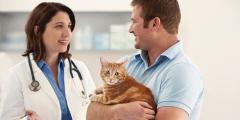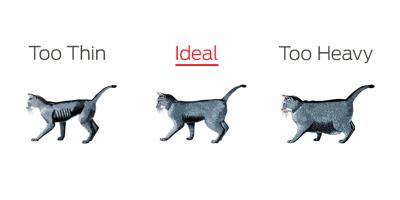
It's summertime and we know you want to be outside soaking up the beautiful sunshine and enjoying the warm weather with your dog. Some dogs can be particularly sensitive to the heat, so you may need to take a few precautions as you plan your summer adventures. Read our expert tips on how you can keep your dog cool in the summer heat.
1. Have Plenty of Fresh, Cold Water Available
Whether you’re taking your dog on a hike or just playing in the back yard, it’s important to make fresh, cold water available and accessible for him.You can bring a portable, collapsible water bowl or a squirt bottle with you and give your pup small amounts of water every 15 to 20 minutes during activity. Make sure you have enough cool water to last the entire time you’re gone. If your dog starts panting excessively, get him to the shade and give him more water right away.
Arleigh Reynolds, Purina Senior Research Nutritionist and Veterinarian cautions against giving too much water at once, though. “For a forty-five to fifty-five pound dog, don’t let them drink more than four to eight ounces of water at a time. After they’ve had time to absorb it and get it out of their stomach, give them some more ten or fifteen minutes later.”
2. Play in the Water
A wet dog is a cool dog. Dr. Reynolds recommends planning outdoor summer activities with your pooch so they involve some water play—sprinklers, pools or lakes can all be fun for both of you, and definitely cooling.
“Take them someplace where, if you’re going for a run, you can stop and throw a stick and have him swim to fetch it. It’s amazing how quickly that can lower his body temperature and make him feel good.” Just remember to bring some old towels to dry off after he’s done playing!
3. Avoid the Midday Heat
You can exercise your dog outside any time of day, depending on the heat and humidity. A mild, overcast day with low humidity might be okay for a midday walk or run, but if it’s a hot sunny day with high humidity, it may be better to avoid the midday heat. If you do need to get some exercise in on those types of days, try to go early in the morning or later in the evening when it’s a bit cooler.
Remember to check the temperature of the pavement before you head out for a walk. Even on milder days, asphalt can get extremely hot in direct sun and hurt your dogs little paw. Dr. Reynolds suggests putting your hand on the pavement to test the temperature. You can also pour water on blacktops and if it immediately steams up, it’s too hot for your pup.
“You can get little boots for your dogs’ paws, but you have to be careful with those, too,” he says. “If they get hot, it will cause a problem anyway.” Dr. Reynolds prefers walking his dogs on trails. Because they aren’t hard surfaces and are typically shaded, they’re less likely to cause injury.
4. Never Sit in a Parked Car
Don’t leave your dog in a parked car—ever—even with the windows cracked. Even on milder days, temperatures inside the car can quickly rise to dangerous, life-threatening levels.
According to the Centers for Disease Control and Prevention (CDC), “Cars parked in direct sunlight can reach internal temperatures up to 131°F to 172°F when it’s 80°F to 100°F outside.”
If you want to take your dog on a road trip this summer, Dr. Reynolds says, “In the car with air conditioning is fine. Keep an eye on him to see if he starts panting, though. If the dog isn’t acclimated to travel, the extra anxiety associated with traveling can be enough to put a dog over the edge.”
5. Stay Out of the Dog House
Dog houses don’t allow for air flow, which makes them dangerous in the summer heat. If you need to keep outside dogs cool in summer, give them plenty of shady areas to lounge in with fresh, cool water on hand. Adding ice to the water bowl can help, too.
6. Know the Signs of Heatstroke in Dogs
Any time you’re out and about with your dog, pay attention to his behaviour, body language, and more.
Dr. Reynolds points out that there are a couple things you can look out for, including “panting and how excited your dog is to keep going with the activity. If your dog suddenly starts holding back on a walk or run, that’s a clear sign to take a break and cool off. Another thing to look for is the way he holds his ears and tail.
“If his ears are erect and he’s alert and looking around, great. If they start to droop, that’s worrisome. The same goes for the tail. I’ve noticed when a lot of dogs get warm, if they have a tail that’s normally up and wagging, it will start to drift down or even go all the way down, which is another warning sign.”
Heatstroke is a serious risk for dogs on hot days. Puppies, senior dogs and those in poor health are at a much higher risk. Following the above tips can help prevent overheating and heat stroke in dogs, but knowing what to look for is also critical.
Symptoms of heatstroke include:
- Excessive panting and/or salivating
- Obvious discomfort
- Vomiting and diarrhea
- Disorientation
- Seizures
If you notice any of the above symptoms, get your dog into a cooler environment as soon as possible and call your veterinarian for further instructions. Dr. Reynolds recommends carrying a digital thermometer with you so you can monitor your dog’s temperature.
“If your dog’s body temperature goes above one hundred and four degrees, it’s time to get them out of the sun and decrease the level of activity,” he says. A 104-degree body temperature isn’t dangerous, but it’s a threshold. A dog who’s handling the heat well may have a temperature of 109 degrees and within a minute it will drop to 104 and down to 102 in another minute.
When your dog’s temperature stays elevated, even after stopping activity and getting out of the heat, that’s a sign you need to intervene. Dr. Reynolds recommends squirting your dog’s chest and armpits with cool water and rubbing it in. You can also rinse his mouth with water, which helps his internal cooling system work more efficiently.
Many signs of heat stroke may not appear for several days, so be on the lookout beyond your outdoor activities. Prompt veterinary care can prevent or treat some of these complications.
Related articles



